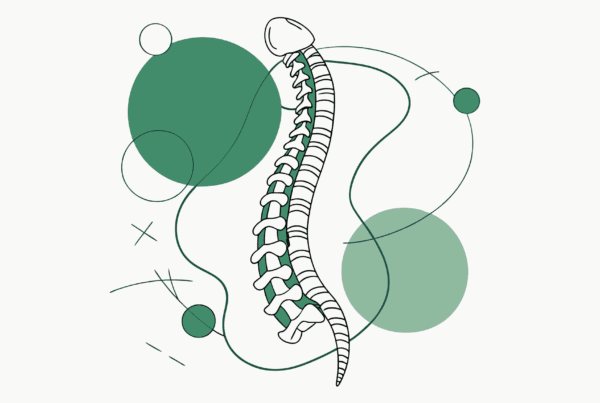Selling your wound care practice in Los Angeles is a major decision. You have built a valuable service for the community, and now you are considering the next chapter. This guide will walk you through the current market, how to value your practice, and what to expect during the sale process. We want to give you the clarity you need to move forward with confidence.
Curious about what your practice might be worth in today’s market?
Market Overview
The market for wound care services is strong. Nationally, the industry is projected to grow from over $15 billion in 2024 to more than $25 billion by 2034. This is a yearly growth rate of over 5%. This signals high demand from buyers who see the long-term value in specialized medical services like yours.
In Los Angeles, the landscape is competitive and dynamic. Buyers, from large hospital systems to private equity-backed groups, are actively looking for established wound care centers to acquire. They are interested in practices with a solid patient base, efficient operations, and a good reputation. This creates a favorable environment for sellers, but it also means buyers are sophisticated. They know what they are looking for, and they expect to see a well-run business. This climate presents a clear opportunity for practice owners who are properly prepared for a sale.
Key Considerations for Your LA Practice
When preparing to sell your wound care practice, focusing on the right details can have a major impact on your final valuation. Buyers in a sophisticated market like Los Angeles will look closely at the underlying health of your business.
Navigating Regulatory Compliance
Your practice must have a spotless compliance record. Buyers will perform deep diligence on your documentation, billing codes, and adherence to both state and federal regulations. Any past issues can create roadblocks or lower the offers you receive.
Mastering Reimbursement Models
Wound care is heavily influenced by Medicare and Medicaid payment policies. Recent updates, like those in the CY 2024 Physician Fee Schedule, can directly affect your practice27s profitability. Demonstrating that you have a stable payer mix and have adapted to these reimbursement changes shows buyers that your revenue is secure and predictable.
Leveraging Technology Integration
Buyers prefer practices that use modern technology. An integrated Electronic Health Record (EHR) and efficient billing system are no longer optional. These systems show that your practice is run professionally and will be easier to integrate into a larger network. Outdated systems can be a red flag for buyers, suggesting operational inefficiency.
The due diligence process is where many practice sales encounter unexpected challenges.
Market Activity
The Los Angeles market for medical practices is active, but specific transaction details are often kept private. We see a clear trend of consolidation. Larger, well-capitalized groups are acquiring smaller, independent practices to expand their footprint. These buyers include regional health systems, national wound care management companies, and private equity firms.
This activity creates a competitive environment, which is good for sellers. When multiple buyers are interested, you have more leverage to negotiate a better price and more favorable terms. However, it also means you are not just selling a practice. You are positioning it to compete for the attention of these strategic acquirers.
The key is to understand what these different types of buyers are looking for. A hospital may be focused on expanding its service lines, while a private equity group may be looking for strong financial performance and growth potential. Running a process that attracts multiple types of buyers is the best way to ensure you receive the highest possible valuation for your life’s work.
The Sale Process at a Glance
Selling a medical practice follows a structured path. Understanding these steps helps you prepare for what is ahead and avoid common mistakes. One-off offers rarely result in the best deal. A structured process is designed to protect your interests and maximize value.
Here is a simplified look at the stages of a sale:
| Stage | What It Involves | A Common Pitfall |
|---|---|---|
| Preparation | Organizing financials, legal documents, and operations. | Having messy books that are not ready for buyer review. |
| Valuation | Determining the fair market value of your practice. | Relying on a simple “rule of thumb” instead of a detailed analysis. |
| Marketing | Confidentially presenting the opportunity to qualified buyers. | Accepting the first offer without creating a competitive process. |
| Due Diligence | The buyer thoroughly inspects every aspect of your business. | Being unprepared for detailed requests, causing delays and mistrust. |
| Closing | Finalizing legal agreements and transferring ownership. | Overlooking tax implications that reduce your net proceeds. |
A comprehensive valuation is the foundation of a successful practice transition strategy.
How Your Practice is Valued
A common question we hear is, “What is my practice worth?” The answer is more complex than a simple formula. While general practices might be valued based on a multiple of revenue, specialized practices like wound care are typically valued using a multiple of Adjusted EBITDA.
EBITDA stands for Earnings Before Interest, Taxes, Depreciation, and Amortization. It is a measure of your practice’s cash flow and profitability. We then “adjust” this number by adding back personal expenses run through the business or normalizing an owner’s salary to market rates. This gives a true picture of the practice’s earning power for a new owner.
For example, a practice with $700,000 in Adjusted EBITDA might receive a valuation multiple of 5x to 7x, or even higher, depending on factors like its size, growth rate, and provider structure. A solo-physician practice will have a different multiple than a multi-provider practice. Because so many factors are involved, getting a professional valuation is the only way to know you are starting negotiations with an accurate and defensible number.
Thinking Beyond the Sale
The sale of your practice is not the end of the story. A successful transition requires planning for what comes next, both for you and for the practice you built. Thinking about these issues early in the process ensures the final deal structure aligns with your personal and financial goals.
Your Role After Closing
Many buyers will want you to stay on for a period of time to ensure a smooth transition. This can range from a few months to a few years. Sometimes, part of the sale price is tied to future performance goals, which is known as an “earnout.” It is important to have a clear understanding of what will be expected of you before you sign the final papers.
Structuring Your Financial Future
The structure of your sale has major implications for your after-tax proceeds. You may also have the opportunity to “roll over” some of your ownership into the new, larger company. This allows you to take cash off the table now while also participating in the future growth of the combined entity. This can lead to a second, often larger, payout when the new company is sold years later.
Protecting Your Legacy and Staff
You have invested years into building your team and reputation. A well-managed transition protects both. The right partner will value your staff and the culture you have created. We help you negotiate terms that ensure a smooth handover, providing stability for your team and continuity of care for your patients.
Your legacy and staff deserve protection during the transition to new ownership.
Frequently Asked Questions
What is the current market outlook for selling a wound care practice in Los Angeles?
The market for wound care services is strong and growing nationally, with the industry projected to grow from over $15 billion in 2024 to more than $25 billion by 2034. In Los Angeles, there is high demand from buyers including hospital systems and private equity groups, creating a competitive environment favorable for sellers with well-run practices.
How is the value of my wound care practice determined in Los Angeles?
Wound care practices are typically valued using a multiple of Adjusted EBITDA (Earnings Before Interest, Taxes, Depreciation, and Amortization). This measure adjusts for personal expenses and normalizes salaries to give an accurate picture of a practice’s earning potential. Valuation multiples can range from 5x to 7x or higher depending on factors like practice size, growth, and provider structure; professional valuation is recommended.
What key compliance and operational factors should I focus on before selling my wound care practice?
Buyers in Los Angeles expect a spotless regulatory compliance record including proper billing and documentation adhering to federal and state rules. Modern technology integration such as an Electronic Health Record (EHR) and efficient billing systems is essential. Also, demonstrating mastery of reimbursement models including Medicare and Medicaid policies helps show stable revenue streams.
What does the typical sale process of a wound care practice involve?
The sale process includes several stages: Preparation (organizing financials and legal documents), Valuation (determining fair market value), Marketing (confidentially presenting to qualified buyers), Due Diligence (buyers inspect the business thoroughly), and Closing (finalizing agreements and ownership transfer). Each stage requires careful attention to avoid common pitfalls.
What should I consider about my role and financial planning after selling my practice?
Post-sale, buyers may request that you stay on for a transition period, sometimes with part of the sale price tied to performance (earnout). Structuring the sale affects your after-tax proceeds and you might have options to roll over ownership to benefit from future growth. It’s also important to consider protecting your legacy and staff by negotiating terms that ensure continuity of care and team stability.



